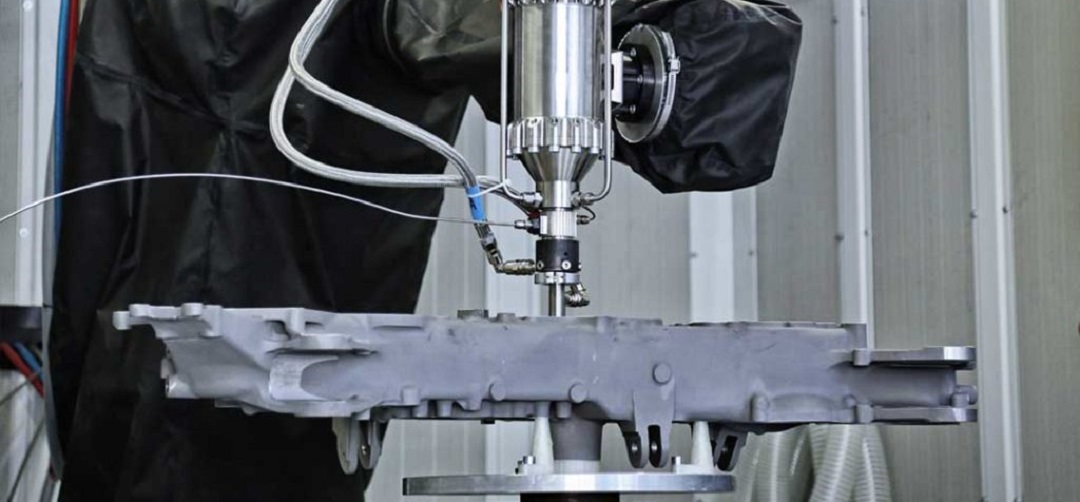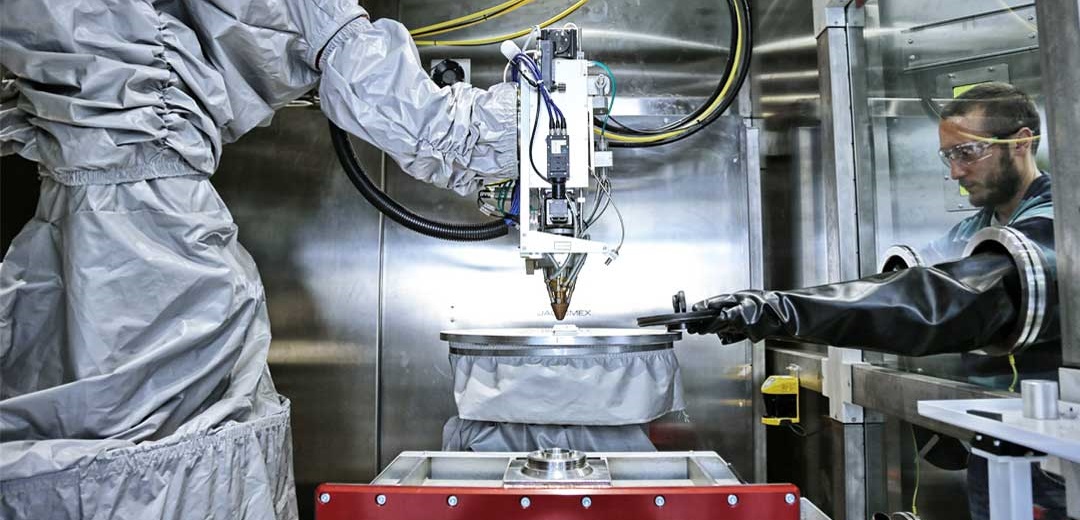Scan and fix: GE Aviation uses additive technology to fast track engine component repairs
The system Avio Aero, a GE Aviation business, is using to service jet engines could be compared to a “brain and hands” concept.
The research and development being carried out by Avio Aero’s Apulia Repair Development Center, or the “brain” of the system, is crucial to advancing the engine repair process.
It is here, inside the Polytechnic of Bari Campus, that the first repair development operation using additive techniques on real jet engine components have begun. Once developed and certified, these activities and processes will be ready for implementation at Avio Aero’s repair facilities, or the “hands” of the system.
Avio Aero’s partnership with the Polytechnic of Bari began in 2010. Today, the Apulia Repair Development Center spans 3,200 square meters where engineers of different ages, academic backgrounds, and geographical and professional origins work side-by-side designing and studying additive repair techniques. The partnership also means that the laboratory can count on highly qualified intellectual input from Professors in the Bari Polytechnic, who will supply the scientific support and know-how to power its research. The Polytechnic will also offer additional expertise from its Department of Mechanical Engineering.
The site is also home to GE Aviation and Avio Aero engineers who work on the Advanced Turboprop and GE9X engine development programs, and on engine control systems and hybrid electric propulsion solutions.
The Apulia Repair Development Center’s team operates two additive technology machines: Cold Spray and Laser Deposition. The additive technology behind these machines enable fast testing of new design practices and approaches for engine components.
However, these machines do differ from traditional additive manufacturing machines: their builds don’t start from a computer-aided design (CAD). Instead, an actual jet engine part is digitally scanned into the machine before determining the repair or reconstruction that needs to take place.
Recently, the Cold Spray technology developed in Bari achieved a major milestone when the repaired component was applied to a GE jet engine for the first time: the accessory gearbox of the iconic GE90 engine, which powers the Boeing 777 long-range aircraft.

Cold spray is especially fascinating when you consider the physics involved: the machine consists of a chamber measuring about 4.5 x 4.5 meters. A powder-charged gun operated by gas (nitrogen or helium) then sprays metallic powders at supersonic speeds onto a workpiece installed on the system’s central plate.
“Every single metal particle from the powder-charged gun attaches to the part (or portion) of the component for reconstruction or repair due to the effect of the kinetics, and the gun functions cold, differently from additive technologies which use laser or electron beams, generating heat. This provides another major benefit, since the physical and mechanical properties of the component are unchanged, while the metal fusion process is still perfect,” explains Giulio Longo, who coordinates all activities on the two systems in the Bari laboratory.
After the GE90, the aviation engine programs involved in these repair development activities will also include the GEnx, CF6-80, CFM56 (the best-selling engine by CFM, a Safran Aircraft Engine and GE joint venture) and LM2500.
Metal powders, or alloys, widely used in the aviation industry can be applied using this technology. This includes steel, aluminum, magnesium and titanium – and also the most famous alloy: titanium aluminum (TiAl), used for the LPT blades of the state-of-the-art GE9X engine. In fact, the other technology being developed at the Apulia Repair Development Center, Laser Deposition, is particularly suitable for TiAl; currently still being tested, this technology will be affecting real engine parts in the very near future.
In this case, the powder is deposited on the component for repair with a high precision laser. Laser Deposition is ideal for very thin or small components, which are difficult to weld or recover, such as engine turbine blades or nozzles.
Last but not least, an incredibly important aspect of additive technology, which implies benefits for the environment as well as for the customer: the potential for replacing and repairing parts, avoiding the costs of new parts and reducing raw material consumption. With additive manufacturing, there is little to no powder waste because surplus powder can be reused on future builds. In terms of emissions and noise, the additive manufacturing process is infinitely superior to traditional manufacturing processes.
